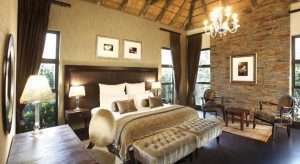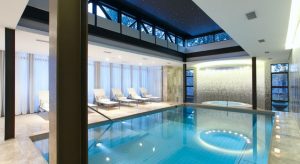 As < the world continues to debate whether or not climate change is a reality, businesses throughout South Africa are weighing up the pros and cons of “going green”. While some use eco status as a badge to promote a good image, others are intent on actually making a difference in the way they impact the environment.
In the construction industry, for example, many companies are focussing on green building, ensuring that materials used are environmentally friendly and that the buildings are designed to promote natural airflow, less electricity usage and increased incorporation of greenery. The question is, what happens after these buildings are occupied? Are green principles maintained by those that use the space? Are green cleaning methods used, is printing limited, is pollution thwarted? If not – can the building still be called green?
The key to achieving “going green” is training (educating people how to be more green) and viability (is it affordable for companies to choose a less harmful path?). According to Shawn Andrews, Managing Director of BanoBrite, companies are still skeptical about the green movement. “We developed a ‘green challenge’ and approached a number of lodges and hotels, challenging them to change their cleaning footprint to a completely green solution,” confirms Andrews. “We were met with much skepticism. This ranged from price concerns to indifferent attitudes.”
[caption id="attachment_4648" align="alignleft" width="300"]
As < the world continues to debate whether or not climate change is a reality, businesses throughout South Africa are weighing up the pros and cons of “going green”. While some use eco status as a badge to promote a good image, others are intent on actually making a difference in the way they impact the environment.
In the construction industry, for example, many companies are focussing on green building, ensuring that materials used are environmentally friendly and that the buildings are designed to promote natural airflow, less electricity usage and increased incorporation of greenery. The question is, what happens after these buildings are occupied? Are green principles maintained by those that use the space? Are green cleaning methods used, is printing limited, is pollution thwarted? If not – can the building still be called green?
The key to achieving “going green” is training (educating people how to be more green) and viability (is it affordable for companies to choose a less harmful path?). According to Shawn Andrews, Managing Director of BanoBrite, companies are still skeptical about the green movement. “We developed a ‘green challenge’ and approached a number of lodges and hotels, challenging them to change their cleaning footprint to a completely green solution,” confirms Andrews. “We were met with much skepticism. This ranged from price concerns to indifferent attitudes.”
[caption id="attachment_4648" align="alignleft" width="300"] Room at Valley Lodge[/caption]With a little persistence, however, Andrews found a business that was ready to take up the challenge – Valley Lodge and Spa in Magaliesburg. Valley Lodge took up the task of greening the business, beginning with the process of converting the entire establishment from chemicals to green cleaning, thus making it the first lodge in South Africa to adopt a 100% green cleaning policy.
Room at Valley Lodge[/caption]With a little persistence, however, Andrews found a business that was ready to take up the challenge – Valley Lodge and Spa in Magaliesburg. Valley Lodge took up the task of greening the business, beginning with the process of converting the entire establishment from chemicals to green cleaning, thus making it the first lodge in South Africa to adopt a 100% green cleaning policy.
The first step in revolutionising the cleaning process was to determine the number of products used in each department (laundry, kitchen and housekeeping) and the areas where they could be replaced with the BanoBrite/Green Worx range of products. “To ensure a smooth change-over in each department, it was decided to convert each department individually. This meant that with adequate training, the integrity of the green methodologies was maintained,” confirms Andrews.
In response to cost concerns, Andrews confirms that product usage was reduced by 30% in the first two weeks of the change. In addition, one all-purpose cleaner replaced up to four chemical cleaning products, making it even more cost effective. The kitchen is now more sanitary, with the use of non-toxic cleaning products, and the sewage plant was treated with a sewage activator, which eliminated the waste and chemical build up that had been exacerbated over time.“Valley lodge is now 100% green; no chemicals are being used on the property, their costs have decreased by 40% and continue to drop,” concludes Andrews. “This is an example that all businesses aspiring to go green should follow – start where you can and then go all out!”
